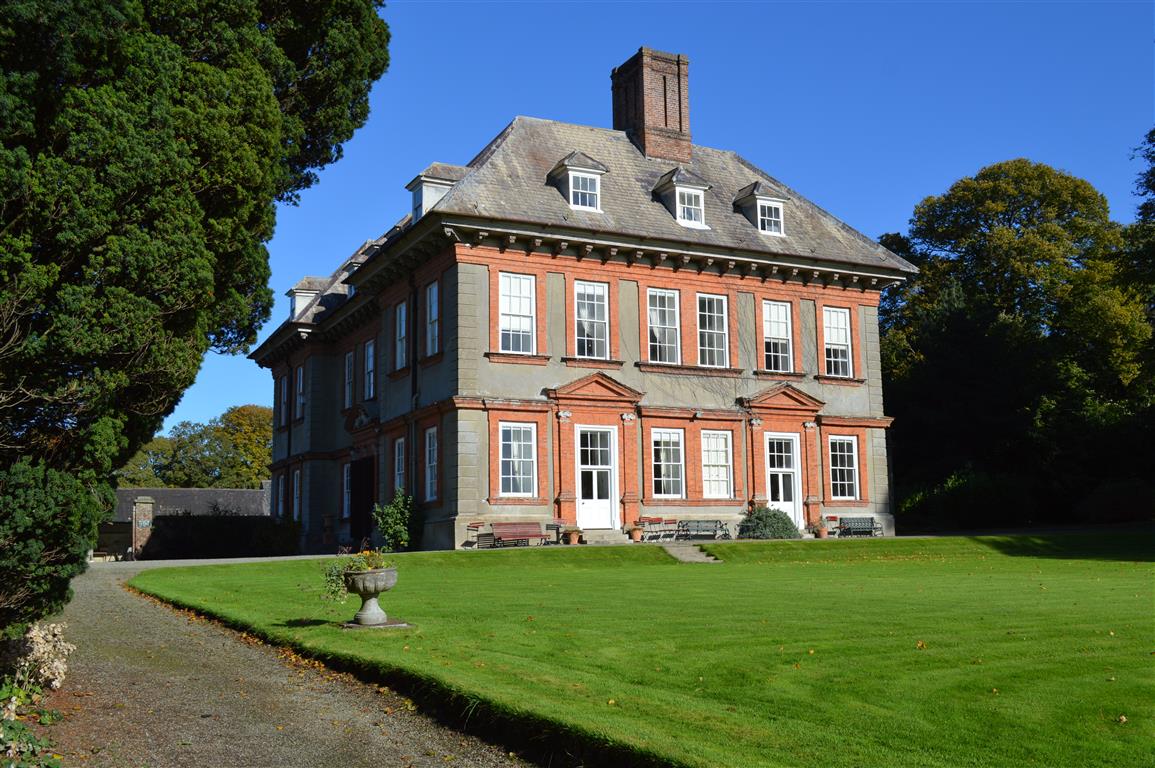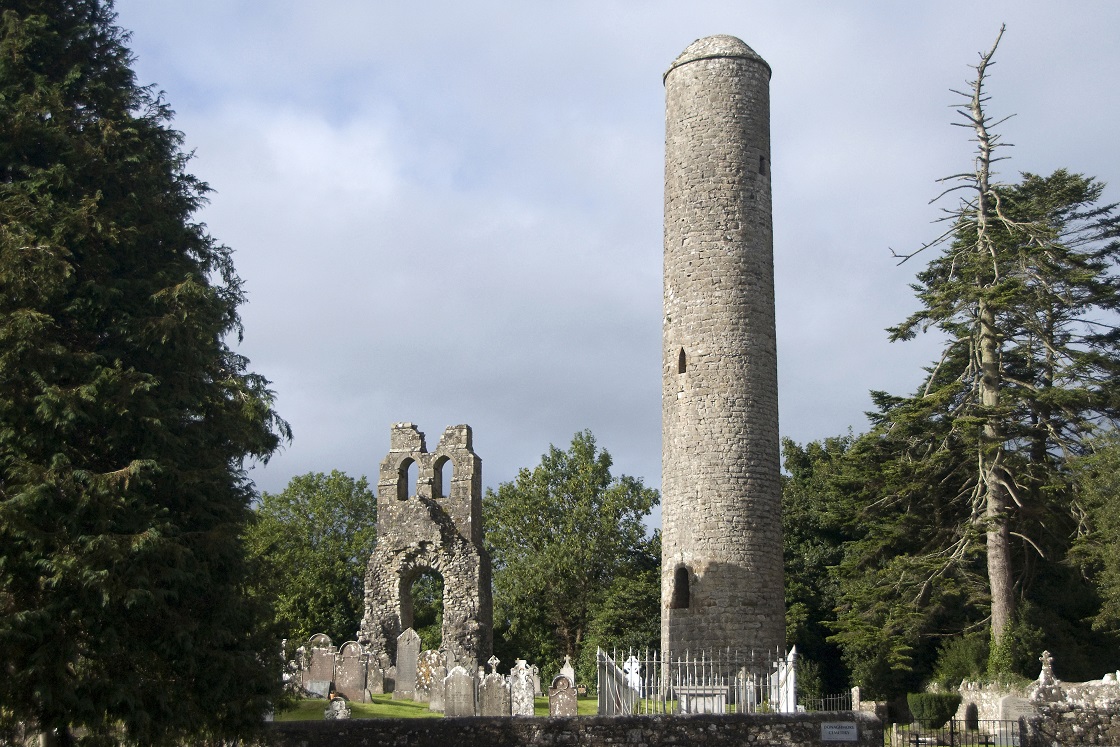Batterstown Kilcloon Heritage trail
Journey Through Time: Discovering the Rich Heritage of Batterstown and Kilcloon
Batterstown Kilcloon Heritage Keepers

Batterstown, Kilcloon, Co Meath
Free

Journey Through Time: Discovering the Rich Heritage of Batterstown and Kilcloon
Batterstown Kilcloon Heritage Keepers

Batterstown, Kilcloon, Co Meath
Free
Photo credit - Eamonn Gosling Masterpiece Aerial Photography
Please note: Dowth Hall is not open to the public at this. More details on the Boyne Valley National Park will be announched in due course.
The Boyne Valley National Park will be the 7th in Ireland and will join Wild Nephin in Mayo, The Wicklow Mountains National Park, The Burren National Park in Clare, Killarney National Park in Kerry, Glenveagh National Park in Donegal and Connemara National Park in Galway.

Dowth Hall
Dowth,
Slane,
Co. Meath
(not open to the public at present)
The early Christian monastery of Castlekeeran is situated in the valley of the River Blackwater. Very little remains of the structure of this 8th century monastic settlement but with three high crosses, an Ogham stone and a early cross slab grave on the wall of the one remaining part of the church it was worth paying a visit to.
Castlekeeran,
Kells,
Co. Meath
St. Ciaran's (also seen as St. Kieran's) Holy Well is near both Castlekeeran (and its monastic site) and Carnaross townlands (approximately three miles). The well is of bedrock and is accessible by crossing one of two bridges across a river. The main well is situated beside a large ash rag tree and has two steps descending into its gorge; two others are proximal and follow along the rock streambed.

St. Ciaran's Well
Castlekeeran,
Co. Meath
Located on the east side of Castle Street, this building ranks as the largest fortified town house to survive in Ireland. The mass of its masonry makes it the most noticeable of the remains of the medieval town of Ardee. Dating from the fifteenth century, this structure is known as ‘Ardee Castle’, ‘St Leger’s Castle’ and ‘Pipard’s Castle’.

The town land of Ardmulchan hugs one of the most beautiful bends on the River Boyne between Navan and Slane. For the most part the area was retained by Hugh de Lacy until sometime at the end of the 12th century. This was at a time when defense of the Boyne was vital to the establishment of the Norman colony in Meath. A substantial motte was built, along with a church and several chapels rebuilt on pre Norman foundations. The church tower may be as early as 13th or 14th century. The present ruins of the church seem to be 15th century.

Boyne Rd, Navan, Co. Meath
Please be careful pulling out of the laneway onto the main road when exiting, as visibility is restricted.
View location on Google Maps here
From Navan:
Take the R153 (turning right over the bridge if heading northbound towards Cavan) for Duleek/Ashbourne. Take a slight left at the first junction for the Boyne Rd. Continue on the Boyne Rd for about 3km, you will see signs on the left for Ardmulchan.
From Dublin:
Take the M3 (this road is tolled) headed for Cavan. At junction 8, exit toward R147/Navan (South). Merge onto Navan (South). Turn left onto R147. Turn right onto the R153 for Duleek/Ashbourne. Take a slight left at the first junction for the Boyne Rd. Continue on the Boyne Rd for about 3km, you will see signs on the left for Ardmulchan.
Via M1 Motorway or Drogheda:
From the M1 (this road is tolled) coming from Belfast, take the exit for junction 10, take the N51 exit to Slane/Drogheda North. At the roundabout, take the 3rd exit onto N51 headed for Slane. If coming from Drogheda take the N51 headed towards Slane also. In Slane take a left on the N2 towards Dublin. About 2km outside Slane turn right onto L1600 for Trim/Navan. Continue straight down this road for 6 km until you see the signs for Ardmulchan on the right.
Athlumney overlooks a key strategic point, where the Leinster Blackwater drains into the Boyne. The placename derives from the Irish for "Loman's ford", referring to Lommán of Trim. Archaeological digs uncovered an Early Christian souterrain.
The motte at Athlumney (which preceded the existing castle) was built in the years after 1172 when Hugh de Lacy, Lord of Meath granted the title of Baron Skryne to his ally Adam de Feypo; he in turn granted Athlumney to a relative Amauri de Feipo, who built the motte.

Convent Rd, Navan, Co. Meath.
View location on Google Maps here
Please contact OPW for access to Athlumney Castle.
Athlumney is situated on the East Bank of the Boyne River and to find it take the M3 from Dublin to Cavan. Exit at junction 7 and follow the signs for Navan. At Navan take a right turn onto Athlumney Rd towards Kentstown This is the R153. Take the first turn right onto Convent Rd which is a narrow road with a one way system, so you will have to exit from it's other end when leaving. You can park near a green area in the Athlumney Castle housing estate just adjacent to the Castle and have a good walk around.
The Battle of the Boyne (1690) is one of the most significant events in Irish history, part of a wider struggle for power across 17th century Europe.

Battle of the Boyne Visitor Centre
Oldbridge House
Oldbridge
Drogheda
Co. Meath
A92 CY68
See website for further details.
By car: The Battle of the Boyne Visitor Centre is located on the South bank of the River Boyne, 3km north of Donore Village. The site is sign-posted from Exit 9 off the M1 (Dublin/Belfast), off N2 (Slane/Ashbourne and off N51 (Slane/Drogheda) – the N51 is Not Suitable for Coaches. Coach Parking available in Visitor Centre Car Park.
Bus Services from Drogheda to the Battle of the Boyne www.buseireann.ie
Bru na Boinne (Newgrange and Knowth) bus link 188
TFI Local Link Route 188 connecting Rathcairn, Athboy, Navan, Duleek, Donore, and Drogheda with Brú na Bóinne and the Battle of the Boyne Site. The route operates 8 times per day, 7 days per week providing improved access to our heritage sites. Access the Athboy to Drogheda timetable and many more Local Link timetables available at www.locallinklmf.ie/rrs-daily-services.
Airport
Distance from Dublin International Airport is 44Km
Port
Distance from Dublin Port is 50km
Distance from Dun Laoghaire Port is 63Km
Locate Us:
GPS: 53.722699, -6.412969
May - September (Open Daily) 10am - 5.00pm
October - April (Open Daily) 9am - 4.00pm
PLEASE NOTE: Main Entrance Gate to estate locked at 4pm sharp. Exit Gate locks at 6pm sharp. A call-out fee will apply for vehicles still parked in car park after the 6pm deadline.
See website and Facebook for up-to-date information on visiting and access.
Senior/Group €4.00
Child/Student €3.00 (Children under 12 are free of charge)
Family €13.00
No group bookings available until further notice
Online Booking – BOOK HERE
If you are unable to book online please telephone 041 980 9950 for assistance.
Beaulieu House is a 17th Century house and gardens.It is one of the first unfortified houses built in Ireland and designed around an old Plunkett property by Sir Henry Tichbourne, who was granted a Patent to the lands in 1666, by Charles II.
Situated on the north bank of the river Boyne between Drogheda and the Irish Sea, the estate was originally owned by the ‘St. Oliver' branch of the Plunkett family and was the Army in Ireland and Governor General of Drogheda at the time of the Restoration of Charles II.

Beaulieu House, Gardens & Car Museum,Drogheda,Co Louth
For opening times, please visit http://beaulieuhouse.ie/
Please see website for bookings and prices
Saint Patrick is said to have first founded a monastery here, giving charge of it to one of his followers, St. Cassanus. The existing ruins, however, do not date back that far. The architectural style of the church indicates it was built in the 15th Century. Most likely, it replaced an older church built in the Romanesque style; a carved Romanesque head is incorporated in the south wall of the bell tower. The round tower predates the church and was built in the 9th or 10th century. It is well-preserved though missing its conical cap.

Slane Road,Navan
View location on Google Maps here
From Dublin take the M3 motor way(this road is tolled), leaving at Exit 8 or N3 to Navan, on continue through Navan and take a right just beyond the turn for Kentstown, you will see a sign N 51 Kingscourt /Drogheda, go up Flower Hill and keep right round the roundabout at the Round O public house. The cemetery is about a mile on the left-hand side of the Slane road, you will see a sign with a P (Park) & + Cross, turn left here and a few yards up this road you will see a Round Tower and gate leading to the cemetary.
Via M1 Motorway or Drogheda: From the M1 (this road is tolled) coming from Belfast, take the exit for junction 10, take the N51 exit to Slane/Drogheda North. At the roundabout, take the 3rd exit onto N51 headed for Slane. If coming from Drogheda take the N51 headed towards Slane also. Continue on the N51 through slane towards Navan after approx 9kms there should be signage for Donaghmore Round Tower & cemetary
Free